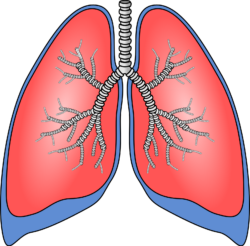Aflatoxins and Their Association With Liver Cancer: a Hazardous Culprit
This article explores the intricate relationship between aflatoxins, toxic compounds produced by certain fungi, and the heightened risk of liver cancer.
It delves into the origins, production, and global impact of aflatoxin contamination.
Furthermore, the discussion extends to effective strategies for reducing aflatoxin exposure in food and feed, and the crucial role of regulatory bodies in ensuring food safety.
The aim is to provide valuable insights for those seeking to serve others through enhanced food safety practices and health promotion.
Key Takeaways
- Aflatoxins are toxins produced by certain fungi found on agricultural crops like maize, peanuts, cottonseed, and tree nuts.
- Exposure to aflatoxins can occur through consuming contaminated plant products or meat and dairy products from animals that ate contaminated feed.
- Aflatoxin exposure is associated with an increased risk of liver cancer, especially hepatocellular carcinoma (HCC), the most common type of liver cancer.
- Reducing aflatoxin exposure through proper storage and handling of food products, agricultural practices, and education and awareness programs is crucial in reducing the burden of liver cancer.
Understanding Aflatoxins: Origin and Types
Aflatoxins, toxic compounds produced by fungi such as Aspergillus flavus and Aspergillus parasiticus, predominantly contaminate agricultural crops including maize, peanuts, cottonseed, and tree nuts, particularly in warm and humid regions. These toxins pose a significant health risk, necessitating effective aflatoxin prevention methods and detection techniques.
Prevention strategies involve the application of good agricultural practices, including timely harvesting, proper drying, and safe storage of crops. Meanwhile, detection techniques range from visual inspection to more sophisticated methods such as chromatographic and immunological assays. The focus is to mitigate the aflatoxin contamination risk, ensuring the safety of food supplies.
This collective effort is essential in serving others, contributing to the overall well-being of communities globally by ensuring food safety and reducing health risks.
The Role of Fungi in Aflatoxin Production
Specific fungi, particularly Aspergillus flavus and Aspergillus parasiticus, are known to produce toxins that contaminate various agricultural crops. This contamination plays a significant role in aflatoxin biosynthesis, a process that results in the production of potent carcinogens.
These aflatoxins pose serious public health risks, particularly in regions where the climate favors fungal growth. Therefore, understanding the mechanisms of aflatoxin detoxification is crucial in order to develop effective strategies for aflatoxin control. This knowledge can support the reduction of aflatoxin contamination in crops, thereby lessening human and animal exposure to these harmful toxins.
Furthermore, this understanding is beneficial for those who are committed to serving others, as it provides a foundation for promoting safer agricultural practices and food products.
The Global Impact of Aflatoxin Contamination
The global impact of aflatoxin contamination is significant and widespread, affecting agricultural economies, trade, and public health, particularly in regions with warm and humid climates.
The impact on global food trade is profound, as contaminated products face increased scrutiny and potential rejection from importing countries, resulting in economic losses.
The economic burden of aflatoxin contamination is heavy, particularly in developing nations where resources for detection and mitigation are limited. This burden extends beyond the direct loss of contaminated crops, encompassing the potential healthcare costs associated with aflatoxin-induced illnesses.
Mitigating aflatoxin contamination is critical not only for economic stability and global trade, but also for the overall well-being of communities affected by this pervasive issue.
Routes of Human Exposure to Aflatoxins
Routes of human exposure to aflatoxins primarily include ingestion, inhalation, and skin contact. Dietary intake is the most common route of exposure. Assessing the global prevalence of aflatoxin contamination reveals a significant risk, particularly in regions with warm, humid climates where these toxins thrive.
Consumption of contaminated crops, such as maize and peanuts, constitutes the primary source of exposure. However, occupational hazards of aflatoxin exposure also exist. Agricultural workers involved in the handling and processing of contaminated crops can inhale toxigenic dust, leading to respiratory exposure.
Thus, strategies to mitigate aflatoxin contamination and exposure are paramount. These strategies are important not only in safeguarding food security but also in protecting the health of those serving the agricultural sector.
Health Implications of Aflatoxin Exposure
Health implications linked to exposure of the aforementioned fungal toxins range from acute toxicity to chronic health issues such as immunosuppression and carcinogenesis. These health effects can significantly alter the quality of life, underscoring the need for robust prevention measures.
Aflatoxin exposure has been associated with an increased risk of hepatocellular carcinoma, the most common type of liver cancer. The risk is amplified in regions with high aflatoxin exposure, often due to dietary intake of contaminated food. Aflatoxins can interact synergistically with hepatitis B and C viruses, further exacerbating the risk.
Therefore, prevention of aflatoxin exposure is paramount to reducing the burden of liver cancer. This can be achieved through proper storage and handling of food, and awareness programs on aflatoxin control.
The Link Between Aflatoxins and Liver Cancer
Evidence suggests a strong correlation between exposure to certain fungal toxins and an increased incidence of hepatocellular carcinoma, underscoring the need for robust control and prevention measures.
Aflatoxin detection methods have seen significant advancements, making it possible to limit exposure. However, challenges remain, particularly in regions where resources are limited.
A comparative analysis of aflatoxin regulations and policies worldwide reveals disparities in enforcement and monitoring, leading to varying rates of exposure. These differences underscore the necessity for a global, unified approach to aflatoxin control.
It also highlights the importance of continued research into more efficient detection methods and the establishment of universally applicable regulations to curb the devastating health consequences of aflatoxin exposure.
How Aflatoxin Promotes the Development of Hepatocellular Carcinoma
Understanding the mechanism by which these mycotoxins influence the onset of hepatocellular carcinoma represents a pivotal aspect of current research. In-depth analysis suggests that aflatoxins contribute to the mutation of the p53 gene, a well-known tumor suppressor.
Aflatoxin detection methods, such as High-Performance Liquid Chromatography and enzyme-linked immunosorbent assay, are crucial in monitoring food and feed contamination levels.
Furthermore, international aflatoxin regulations and policies are implemented to limit exposure, thereby reducing the risk of hepatocellular carcinoma. These include setting maximum permissible levels of aflatoxins in food and feed, and practicing strict control in food production and storage.
Continued research and policy development are integral to safeguard the health of the community from the adverse effects of aflatoxins.
The Synergistic Effect of Aflatoxins and Hepatitis Viruses on Liver Cancer
Having shed light on the role of aflatoxins in the development of hepatocellular carcinoma, focus now shifts to the synergistic effect of aflatoxins and hepatitis viruses on liver disease. Research indicates that aflatoxins and hepatitis viruses, specifically hepatitis B and C, interact in a detrimental manner, significantly increasing the risk of liver disease.
Crucially, both aflatoxins and hepatitis viruses are preventable. For aflatoxins, prevention strategies include the implementation of stringent agricultural practices to minimize aflatoxin contamination in crops. This is particularly important in regions with high aflatoxin exposure. By adopting such measures, not only is the burden of liver disease reduced, but the overall health of communities at risk is significantly improved.
Strategies for Reducing Aflatoxin Exposure in Food and Feed
Strategies for reducing exposure to these harmful mycotoxins in food and feed encompass a wide range of measures. This includes consumer education, rigorous testing protocols, and improved agricultural practices.
Community engagement is vital in disseminating knowledge about potential dangers and avoidance techniques. Public health initiatives can augment these efforts, providing resources and guidance for safe food handling and storage.
This combined approach ensures a comprehensive strategy that reaches all stakeholders, from farmers to consumers. Rigorous testing protocols are necessary to detect and manage contamination in crops, while improved agricultural practices can prevent initial contamination.
Thus, a multi-pronged, community-engaged approach, underpinned by strong public health initiatives, offers the most effective strategy for reducing aflatoxin exposure.
The Role of FDA in Monitoring and Controlling Aflatoxins
In the realm of public health, the U.S. Food and Drug Administration (FDA) plays a pivotal role in the monitoring and control of mycotoxins, such as those produced by Aspergillus fungi, to ensure the safety of food and feed commodities.
The FDA's regulations on aflatoxin levels in food and feed are recognized globally and have influenced policies in many countries. These regulations significantly mitigate the health risks associated with aflatoxin exposure, including liver cancer.
Additionally, public health agencies worldwide emulate the FDA's efforts in raising awareness about the link between aflatoxins and liver cancer. This concerted global action against aflatoxins underlines the importance of effective public health regulations and robust awareness campaigns in safeguarding the health of populations.
Effective Agricultural Practices to Minimize Aflatoxin Contamination
Effective agricultural practices, such as crop rotation, proper drying, and storage techniques, play a crucial role in minimizing contamination by fungi that produce harmful toxins in crops.
Novel agricultural techniques for aflatoxin prevention include biocontrol using atoxigenic strains of Aspergillus and genetic engineering of crops for resistance to fungi. These innovative strategies have the potential to significantly reduce aflatoxin levels, thereby safeguarding food production and human health.
However, the impact of climate change on aflatoxin contamination in crops must also be considered. Rising temperatures and changing rainfall patterns can create favorable conditions for fungal growth and toxin production, necessitating further research and adaptive measures to mitigate this risk in the context of a changing climate.
Useful Resources for Further Reading on Aflatoxins and Liver Cancer
Numerous research institutions and government agencies provide comprehensive information on the link between mycotoxins and hepatocellular carcinoma, offering resources for further study and understanding.
The economic impact of aflatoxin contamination on agriculture and food industries is significant, necessitating effective strategies for aflatoxin testing and detection in food products. The U.S. Food and Drug Administration (FDA) and the U.S. Department of Agriculture (USDA) offer valuable insights into these strategies.
The International Agency for Research on Cancer (IARC) and the National Toxicology Program (NTP) provide valuable material on the carcinogenic nature of aflatoxins.
Further awareness is essential to mitigate the health risks and economic burden associated with aflatoxin exposure, thereby serving the greater good.
Frequently Asked Questions
Are There Any Specific Populations That Are More Susceptible to the Health Effects of Aflatoxins?
Populations with high aflatoxin exposure, particularly in regions with aflatoxin-contaminated dietary patterns, are more susceptible to health effects. Genetic susceptibility can also influence individual responses to aflatoxin exposure, further augmenting health risks.
Can Aflatoxins Be Completely Eliminated From Food and Animal Feed Through Processing or Cooking?
Complete elimination of aflatoxins from food and animal feed through processing or cooking is challenging. However, aflatoxin detection and regulation measures can significantly reduce their levels, enhancing safety in the food chain.
What Are the Symptoms of Acute Aflatoxin Poisoning in Humans?
Acute aflatoxin poisoning in humans manifests as severe liver damage, jaundice, hemorrhage, edema, and potentially death. Aflatoxin detection methods and regulation policies play key roles in preventing such harmful exposure and subsequent health effects.
Are There Any Medical Treatments or Antidotes Available for Aflatoxin Exposure?
Medical treatments for aflatoxin exposure are limited, emphasizing the importance of preventive measures. However, research indicates that Aflatoxin Detoxification Methods, such as dietary supplementation with oltipraz, may reduce aflatoxin-induced liver damage.
How Does the Body Metabolize and Eliminate Aflatoxins?
Aflatoxin detoxification occurs via hepatic enzymes, particularly cytochrome P450. This process can be influenced by genetic variations. Unchanged aflatoxins and metabolites are primarily excreted in urine and feces, facilitating body detoxification.
Conclusion
In conclusion, aflatoxins pose a significant global health risk, particularly through their association with liver cancer.
Efforts for aflatoxin control necessitate a multifaceted approach, including safe agricultural practices, effective food storage and handling, regulatory oversight, and public education.
Continued research into aflatoxins and their health implications also remains crucial for the development of new mitigation strategies and to ensure food and feed safety worldwide.

This post has been generated by AI and was not reviewed by editors. This is Not legal advice. Please consult with an attorney.


